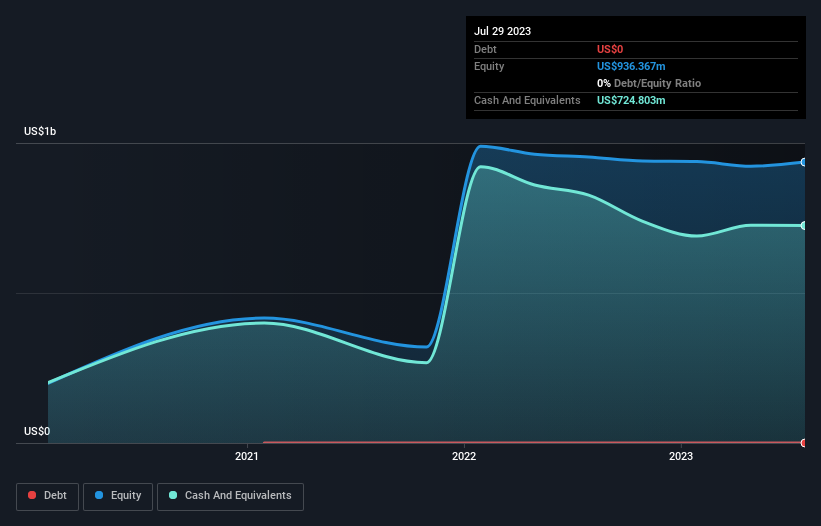We're Not Worried About Samsara's (NYSE:IOT) Cash Burn
Just because a business does not make any money, does not mean that the stock will go down. By way of example, Samsara (NYSE:IOT) has seen its share price rise 121% over the last year, delighting many shareholders. But the harsh reality is that very many loss making companies burn through all their cash and go bankrupt.
So notwithstanding the buoyant share price, we think it's well worth asking whether Samsara's cash burn is too risky. In this article, we define cash burn as its annual (negative) free cash flow, which is the amount of money a company spends each year to fund its growth. We'll start by comparing its cash burn with its cash reserves in order to calculate its cash runway.
Check out our latest analysis for Samsara
When Might Samsara Run Out Of Money?
A company's cash runway is calculated by dividing its cash hoard by its cash burn. In July 2023, Samsara had US$725m in cash, and was debt-free. In the last year, its cash burn was US$21m. That means it had a cash runway of very many years as of July 2023. Notably, however, analysts think that Samsara will break even (at a free cash flow level) before then. In that case, it may never reach the end of its cash runway. You can see how its cash balance has changed over time in the image below.
How Well Is Samsara Growing?
Given our focus on Samsara's cash burn, we're delighted to see that it reduced its cash burn by a nifty 90%. And revenue is up 46% in that same period; also a good sign. Overall, we'd say its growth is rather impressive. Clearly, however, the crucial factor is whether the company will grow its business going forward. So you might want to take a peek at how much the company is expected to grow in the next few years.
Can Samsara Raise More Cash Easily?
There's no doubt Samsara seems to be in a fairly good position, when it comes to managing its cash burn, but even if it's only hypothetical, it's always worth asking how easily it could raise more money to fund growth. Issuing new shares, or taking on debt, are the most common ways for a listed company to raise more money for its business. Many companies end up issuing new shares to fund future growth. We can compare a company's cash burn to its market capitalisation to get a sense for how many new shares a company would have to issue to fund one year's operations.
Since it has a market capitalisation of US$15b, Samsara's US$21m in cash burn equates to about 0.1% of its market value. So it could almost certainly just borrow a little to fund another year's growth, or else easily raise the cash by issuing a few shares.
Is Samsara's Cash Burn A Worry?
It may already be apparent to you that we're relatively comfortable with the way Samsara is burning through its cash. In particular, we think its cash burn reduction stands out as evidence that the company is well on top of its spending. But it's fair to say that its revenue growth was also very reassuring. It's clearly very positive to see that analysts are forecasting the company will break even fairly soon. After considering a range of factors in this article, we're pretty relaxed about its cash burn, since the company seems to be in a good position to continue to fund its growth. Its important for readers to be cognizant of the risks that can affect the company's operations, and we've picked out 2 warning signs for Samsara that investors should know when investing in the stock.
Of course Samsara may not be the best stock to buy. So you may wish to see this free collection of companies boasting high return on equity, or this list of stocks that insiders are buying.
Have feedback on this article? Concerned about the content? Get in touch with us directly. Alternatively, email editorial-team (at) simplywallst.com.
This article by Simply Wall St is general in nature. We provide commentary based on historical data and analyst forecasts only using an unbiased methodology and our articles are not intended to be financial advice. It does not constitute a recommendation to buy or sell any stock, and does not take account of your objectives, or your financial situation. We aim to bring you long-term focused analysis driven by fundamental data. Note that our analysis may not factor in the latest price-sensitive company announcements or qualitative material. Simply Wall St has no position in any stocks mentioned.

 Yahoo Movies
Yahoo Movies 

